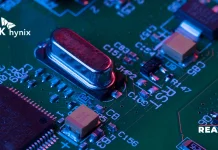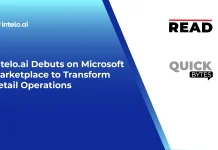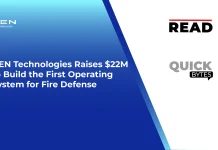Rolls-Royce’s Power Systems division and Forsee Power, a battery maker, have signed a five-year MoU. They will work together to create advanced battery-electric propulsion solutions. This will serve both industrial and transport needs. This agreement names Forsee Power as the main battery supplier for Rolls-Royce’s electrification projects. It’s a significant move toward decarbonisation in the energy and automotive sectors.
What the Partnership Entails?
Under the terms of this agreement:
Forsee Power will serve as the primary supplier of battery systems for Rolls-Royce’s Power Systems business, spanning land, rail, marine and industrial-power applications.
The companies will co-develop high-performance battery solutions matched to Rolls-Royce’s demanding use-cases, with an emphasis on cybersecurity, sustainability and system-analytics integration.
Together they will also deliver advanced monitoring and analytics capabilities to be embedded in the battery systems and related propulsion solutions.
Christophe Gurtner, CEO of Forsee Power, described the alliance as a “strategic milestone” that strengthens Forsee Power’s global presence. Meanwhile Dr Jonathan Chen, Senior VP at Rolls-Royce, emphasised the partner’s strength in high-voltage and high-power systems, adding: “Together, we will deliver solutions that help our customers decarbonise their applications while significantly increasing efficiency and performance.”
Implications for the Energy & Power Industry
This collaboration resonates strongly across the energy & power industry. Key impacts include:
1. Accelerated Industrial Electrification
The focus isn’t just on passenger cars. It also includes heavy-duty, industrial, and marine propulsion systems. In the energy and power domain, battery-electric solutions are expanding beyond mobility. They are now making their way into large-scale power generation and propulsion systems.
2. Materials and Energy-Storage Innovation
Battery systems for industrial propulsion need high power density, strong safety, and long life. This agreement shows that battery technology will be crucial in the energy transition. It will power not only vehicles but also stationary and mobile energy assets.
3. Digital-Enabled Energy Systems
Energy and power businesses must think beyond hardware. With analytics, monitoring, and cybersecurity in battery-propulsion systems, the focus shifts. The mix of energy storage, data intelligence, and automation is now a key strategy.
4. Supply-Chain and Infrastructure Readiness
This partnership shows the growing demand for battery-system manufacturing. It also looks at high-voltage parts, charge and propulsion infrastructure, and lifecycle services. This includes second-life battery management. Energy and power companies need to plan for supply-chain growth. They should focus on sourcing resources and meeting sustainability standards.
Effects on the Automotive Industry
The automotive sector will also feel the impact of this deal, especially in heavy mobility and commercial vehicles:
Beyond Light EVs: While much of the EV focus has been on cars, this agreement amplifies attention on trucks, construction, rail and marine applications where electrification traditionally faced larger barriers. The automotive “ecosystem” is thus broadening.
Also Read: Infios and AWS Partner on Agentic AI for Supply Chains
OEM-Supplier Evolution: Automotive original-equipment manufacturers (OEMs) and propulsion suppliers must align with battery-system specialists capable of high-voltage, high-power solutions-moving faster into strategic partnerships of the kind that Rolls-Royce-Forsee exemplify.
New Service Models: With battery-electric systems comes new maintenance, monitoring and lifecycle-service opportunities in automotive. Suppliers and service providers need to develop skills in analytics, battery health management, and electric mobility services.
Performance and Sustainability as Differentiators: High-performance battery systems help brands stand out in the commercial vehicle market. They need to prove their worth. Here, uptime, duty-cycle, and total cost of ownership are key factors. Sustainability credentials will dominate buyer decisions.
What This Means for Businesses Operating In These Industries
For businesses in energy, power, and automotive, this partnership highlights key strategies:
Opportunities:
Battery makers, high-power electronics firms, thermal management companies, and system analytics providers will face rising demand.
Battery maintenance, second-life reuse, monitoring, and performance analytics services are set to expand.
OEMs and Tier-1 suppliers that partner early with innovators like Forsee Power can tap into advanced architectures. This gives them a first-mover advantage.
Challenges and Considerations:
Businesses need to invest in high-voltage skills. They should also ensure strong safety and cybersecurity systems. Lastly, scalable manufacturing is essential. This is essential to meet the needs of industrial electrification.
Supply chain issues with raw materials, key minerals, and production capacity keep causing problems. Companies should engage strategically with sourcing and sustainability efforts.
The complexity of integration remains significant. Multi-domain systems that combine vehicles, propulsion, and battery platforms require new skills in engineering, testing, and lifecycle management.
Market timing is key. Even though enthusiasm is strong, deep electrification in heavy mobility still faces challenges. These include maturity, regulation, and cost reduction.
Looking Ahead
To leverage this momentum, companies should consider:
Assess how battery-electric propulsion can enhance value in their products.
Investing in analytics and digital services for battery systems is key. Performance, uptime, and lifecycle management are crucial.
Forming strong partnerships with battery-system experts, component suppliers, and analytics firms is key. This approach is like Rolls-Royce’s alliance with Forsee Power.
Focus on sustainability and circular economy design. This includes sourcing raw materials and reusing batteries at the end of their life. It helps meet both regulatory and market expectations.
Conclusion
The partnership between Rolls-Royce and Forsee Power marks a big step forward in the energy and automotive sectors. The two companies are leading the way in electrification and decarbonization. They combine battery system expertise with industrial propulsion leadership. This positions them for next-generation mobility. For these organizations, the message is simple: electrification isn’t just about vehicles or power assets. It includes integrated systems, lifecycle services, data management, and strategic partnerships. Early adoption and innovation will determine future leaders in the coming decade.




